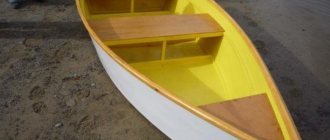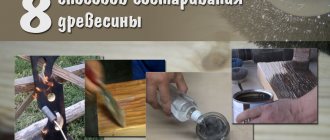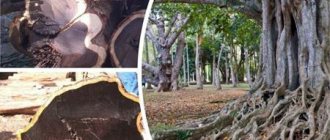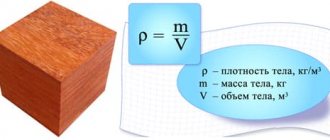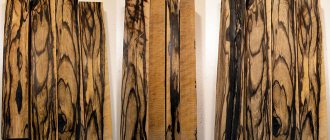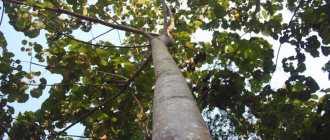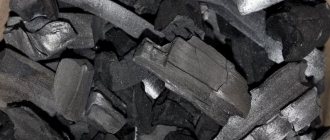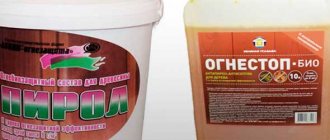Rosewood is a wood from a number of tropical species, in particular the Dalbergia genus.
Rosewood is used in the production of premium types of parquet: piece, solid boards, and is also used in the production of veneer for parquet boards and artistic parquet.
Parts of musical instruments, chess pieces, and interior items are cut from solid rosewood. Wood is used to decorate luxury cabins and expensive furniture.
Spreading
Numerous species of trees of the genus Dalbergia (Brazilian tulip tree, Indian rosewood, Cocobolo, etc.) and their analogues (Bacote, Masasauba, etc.) are common in Southeast Asia, Africa and South America.
Many of them are protected and prohibited from logging. Others, on the contrary, are grown in plantations. However, “rosewood trees” grow rather slowly: to reach maturity they need to grow for at least a century and a half. It is this fact that is associated with the high price of “red” and “black” wood.
Clandestine “workshop” for harvesting mahogany wood in Madagascar
Sissu
A typical Sissu tree
Sissu growing in Pakistan
Trunk
Bark on the trunk
Young foliage
Common foliage in spring
Leaves and immature seeds
Flowers, leaf undersides and mature seeds
Hairy young stems and flowers (close-up)
Branch with leaves
Sissoo (Latin Dalbergia sissoo, English Sissoo, Sisu) is a medium or large fast-growing hardy deciduous tree of the subfamily Faboideae of the Fabaceae family. May also be called – Sheesham
(English:
Sheesham
),
North Indian Rosewood (
English:
Himalaya
raintree
),
Penny
leaf
tree (English:
Penny leaf tree
).
Botanical description
Dalbergia sissoo
– a medium-large deciduous tree with a spreading crown. Can reach 25 m in height and 2–3 m in diameter, but usually remains smaller (10–15 m). The trunks are often crooked when grown separately.
The leaves are leathery, alternate, pinnately compound, reaching 15 cm in length. Flowers are whitish to pink, fragrant, almost sessile, up to 1.5 cm long; dense clusters 5–10 cm in length. The pods are oblong, flat, thin, 4–8 cm long, 1 cm wide and light brown. They contain one to five flat, bean-shaped seeds 8–10 mm long. They have a long rhizome and numerous superficial roots that produce shoots. Young shoots are fluffy and drooping. Old trees have light brown or dark gray bark up to 2.5 cm thick, which peels off in narrow strips. Large upper branches support the spreading crown.
Synonym of
Dalbergia sissoo
-
Amerimnon sissoo
.
Distribution and habitat
Range of Dalbergia sissoo
Sissoo is native to the foothills of the Himalayas, stretching from Afghanistan in the west to the state of Bihar (in eastern India). Also grows naturally in Iran. The tree is naturalized in Africa, Australia and the southern United States. Dalbergia sissoo
invasive in parts of East Africa: Kenya and Tanzania. Cultivated in Muheza and Korogwe (Tanzania).
The tree is found mainly on the banks of rivers below 900 m altitude, but it can be found in its natural habitat at altitudes up to 1300 m. Average temperatures are 10–40 °C, but can fluctuate between just below 0 and 50 °C. Sissu tolerates up to 2000 mm of annual rainfall, as well as 3–4 months of drought. The tree grows on sand and gravel, as well as on the nutrient-rich shifting lands of rivers. It also tolerates salty soils easily.
The plant reproduces by root suckers and also by seeds. The latter are able to germinate for only a few months. They are soaked in water for two days before sowing. Within one to three weeks, 60–80% of the seeds germinate. Seedlings need a sunny or semi-shady place.
Wood
Sanded veneer
Veneer under varnish
End of the board
Sissu with sapwood
The end of the board is wood fibers, taken away. 10x
Sissu – turning part
Sissu wood table top
The heartwood ranges from golden brown to darker reddish brown. Pale, straw-colored sapwood is clearly separated from the heartwood, and is sometimes included in finished products, perhaps for reasons of economy rather than aesthetics.
Sissu usually has a straight grain, although it can be woven, sometimes heavily. The texture is medium to coarse with a good natural shine.
Sissu has good rot resistance and is rated as durable and very durable, but the sapwood is easily attacked by dry termites and borers.
Manufacturability
North Indian Rosewood
the wood is usually dried before being used in furniture making, a process known as curing. Locals leave it in open areas to dry in the sun for about 6 months. In industrial conditions, it is dried in closed chambers with hot air circulation for about 7–15 days, depending on weather conditions. The ideal humidity level is around 5-6% for thin parts and up to 11% for thicker ones, depending on use. Any wood moisture content worse can cause sudden cracking of finished products.
Sissu has good performance characteristics and lends itself well to almost all machining operations. The exception is areas of wood with twisted fibers, which can be torn out during surface treatment. Also, limestone deposits, sometimes present in wood, can quickly dull cutters. Sissu is well sharpened, glued and finished.
When processed, Sissu has a distinct odor, characteristic of most rosewoods of the Dalbergia
, although this smell is somewhat milder than that of other species.
Application
The high-quality wood is used for carpentry and veneer production, and is also processed into plywood, farm equipment and musical instruments, and can be used for skis, carvings, boat building and as flooring.
The Sissu tree is used as fuel wood. Calorific value of wood:
- sapwood – 20.5 MJ/kg (4,908 kcal/kg),
- cores - 21.7 MJ/kg (5,181 kcal/kg).
Sissu is grown for firewood for 10–15 years. The wood is used to produce high-quality charcoal for heating and cooking.
Sissu is sometimes called Indian Rosewood
and, although it is a member of the genus
Dalbergia
, its status as an official rosewood is disputed. Its density, hardness and color intensity are lower than other rosewood species, but the wood is highly respected in its native India, where it is a very valuable timber.
Samples of Sissu
(
Dalbergia sissoo
): 1, 2 – both sides of the board;
3 – end of the board; 4, 5 – end of the board – wood fibers are increased 1
2
3
4
5
Name confusion
Since rosewood is not a genus name, but only a name for the wood, there is sometimes confusion in the market names of the species. Thus, the common name for rosewood in Europe, Rosewood, means “pink tree,” and this descriptive characteristic includes not only Dalbergia wood, but also other species, for example, Brazilian teak.
In South America, trees of the Jacaranda genus are common, which are also considered to be “rosewood trees.” Their wood is also used in the production of expensive parquet. Sometimes this prompts some suppliers to pass off other breeds of similar colors as “Jacaranda”.
Use in magic
You should only buy ready-made amulet or wood in trusted stores, because rosewood is often counterfeited due to its high cost. The Bolivian tree or culupai is passed off as a magical species.
Talismans made from wood with one's own hands are endowed with the greatest power. However, if you do not have the skills to process natural material, you can order a magical talisman in the store. Often practitioners make pendants, rings or bracelets. The wood can additionally be decorated with protective runes of the Elder Futhark, Slavic symbols or signs of deities. You need to wear the magic talisman near your body, removing it as rarely as possible. Figures-amulets are also made from rosewood, which will protect the home from evil. It is better to make them in the form of totem animals. Another popular way to use rosewood is to make a jewelry box. The talismans stored inside will not lose their power and will quickly recharge.
Properties of rosewood
Rosewood parquet is a stable and reliable finishing material, superior in its properties to oak. Although the Brinell hardness of this species is approximately equal to that of oak (3.4 and 3.8, respectively), its high density (700 kg/m³) and resistance to moisture and pests makes rosewood perhaps the most valuable and popular of all exotic species.
The color of rosewood varies from light brown with a pinkish tint to chocolate with purple veins. Different cutting methods allow you to vary the pattern on the main background of the plank from smooth, uniform to variegated.
Rosewood is a soundwood species; its sapwood has a whitish tint and is not used in the production of parquet.
Grenadil - African ebony Dalbergia
When cutting wood, rosewood emits a strong, pleasant odor due to the large amount of essential oils included in its composition. However, when dried, the smell disappears.
Rosewood, despite its high density, is quite easy to cut and process, and is especially well polished.
Kitchen and custom color scheme - is rosewood a good choice?
Many people are still reluctant to use wood in rooms such as kitchens or bathrooms . However, it is worth noting that rosewood, like other exotic species, are ideal for this. They are resistant to moisture or water, so even with possible splashes or water vapor, there is no big problem.
A kitchen that uses rosewood can be truly elegant . Moreover, this material is usually used in some characteristic piece of equipment, such as a table or even a countertop. They look great with white, which is why this combination is the most popular.
If you care about a classic finish in your kitchen, it may also be a good idea to choose rosewood cabinetry. They can be combined, for example, with tiles that imitate brick, which are easy to keep clean. It is also a good idea to use them with decorative stone. However, in this case, it must be remembered that this material requires additional protection through special preparation, because, unlike rosewood, it is not resistant to moisture.

